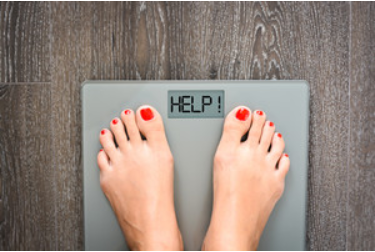…. Im Herbst fallen die Blätter. Es wird schneller dunkel und das auch bei manchen Menschenherzen. Es geht dem Winter zu, was für viele dunkle , ja auch depressive Gedanken zur Folge hat.
..
The leaves fall in autumn. It gets dark faster and so does some people's hearts. Winter is approaching, which for many leads to dark, even depressive thoughts.
….
....
Winterblues
Für manche sind graue, dunkle Tage kein Problem, ja vielleicht sogar ein Genuss. Auch Kälte und Nässe stören sie gar nicht. Aber viele Menschen haben damit Mühe, wenn sich der Sommer und der bunte Herbst verabschiedet und dafür die graue Winterzeit bevorsteht.
Antriebslosigkeit, miese Laune und keine Lust für irgendetwas, das ist typisch für den Winterblues. So richtig depressiv sind die Betroffenen aber doch nicht. Es ist damit einfach eine saisonale Depression gemeint.
Da es meist noch dunkel ist, wenn der Wecker klingelt, kommen viele nur mit Mühe aus den Betten. Eine melancholische Stimmung macht sich breit. Dabei ist wichtig, dass wir es nicht zu einer depressiven Verstimmung kommen lassen. Eine solche zeigt sich an, wenn sich starke Müdigkeit, schlechte Stimmung, Mangel an Motivation oder auch soziale Vereinsamung erkennbar ist.
Es gibt unter uns Menschen, die nur in dieser winterlichen Zeit solche Symptome erleben. Bei uns in der Schweiz trifft es doch etwa 300K Menschen, die eine solche saisonale Depression erleben. Dabei trifft es vor allem solche, die früher schon depressive Episoden erlebt haben oder auch Personen mit einer bipolaren Störung.
..
Winter Blues
For some, gray, dark days are no problem, maybe even a pleasure. Cold and wet conditions don't bother them at all. But many people have trouble with this when summer and the colorful autumn say goodbye and the gray winter season approaches.
Lack of motivation, a bad mood and no desire for anything are typical of the winter blues. But those affected are not really depressed. It simply means seasonal depression.
Since it is usually still dark when the alarm goes off, many people find it difficult to get out of bed. A melancholic mood spreads. It is important that we do not allow ourselves to become depressed. This occurs when severe tiredness, bad mood, lack of motivation or even social isolation are evident.
There are people among us who only experience such symptoms during this winter season. In Switzerland, there are around 300K people who experience seasonal depression. This particularly affects those who have previously experienced depressive episodes or people with bipolar disorder.
....
....
Es werde Licht !! Die Weihnachtszeit ist voller Licht - Kerzenlicht aber auch Herzenslicht. Viele Menschen werden im Herzen mit Dankbarkeit, Familiengemeinschaft und Geschenken erfreut. Happy Christmas, liebe Freunde dieses Bloges. :-)
..
Let there be light !! The Christmas season is full of light – candlelight but also heartlight. Many people's hearts are filled with gratitude, family fellowship, and gifts. Merry Christmas, dear friends of this blog. :-)
....
Es werde Licht
Menschen, die stark auf das Tageslicht reagieren, bekunden auch mehr Mühe, wenn die Tage später beginnen und früher schon enden. Das führt dann schnell mal zu einer Verstimmung.
Kann man solchen Verstimmungen entkommen, ja ausweichen?
Leute, die sich selbst etwas verwöhnen können, indem sie sich etwas gönnen wie eine spezielle Mahlzeit, einen Spielabend, eine Bergwanderung, eine Massage usw., diese finden schnell aus einer depressiven Stimmung.
Ein gesunder Lebensstil mit ausgewogener Ernährung (siehe LLG), ausreichendem Schlaf und genügend Bewegung ist sehr hilfreich. Körperliche Aktivität in der Natur tut ganzheitlich gut. Bei solcher aktiver Betätigung werden die Glückshormone Endorphin, Dopamin und Serotonin ausgeschüttet.
Licht ist ein grosser Heilfaktor. Spezielle Lampen mit einer Lichtintensität von etwa 2500-10000 Lux können Wunder bewirken. Während etwa einer halben Stunde vor dem Licht sein, dazu vielleicht etwas essen, Musik hören, oder ein gutes Buch lesen, das hat eine sehr positive Auswirkung, die spätestens nach drei bis vier Tagen eintritt.
..
Let There Be Light
People who react strongly to daylight also exert more effort when the days start later and end earlier. This quickly leads to an upset.
Can one escape, or even avoid, such upsets?
People who can pamper themselves by treating themselves to something like a special meal, a game night, a hike in the mountains, a massage, etc., can quickly get out of a depressed mood.
A healthy lifestyle with a balanced diet (see LLG), sufficient sleep and enough exercise is very helpful. Physical activity in nature is good for you holistically. During such active activity, the happiness hormones endorphin, dopamine and serotonin are released.
Light is a great healing factor. Special lamps with a light intensity of around 2500-10000 lux can work wonders. Being in front of the light for about half an hour, perhaps eating something, listening to music or reading a good book, has a very positive effect that occurs after three to four days at the latest.
....
....
Anzeichen für eine depressive Verstimmung
Als solche Symptome gelten im Allgemeinen:
Öfters auftretende Müdigkeit
Gedrückte Stimmung, Freudlosigkeit
Verlust an Interesse, Antriebsmangel
Erschöpfung
Sozialer Rückzug, sexuelle Unlust
Anspannung
Reizbarkeit, Nervosität
Konzentrationsmangel
Appetitmangel, Lust auf Kohlenhydrate (oftmals ungesund)
Schlafstörungen führt zu erhöhtem Schlafbedürfnis
Männer leiden oft unter
Kontrollverlust
Unzufriedenheit, Unruhe
Erhöhte Risikobereitschaft
Aggressives Verhalten
Menschen, mit derartigen saisonalen Depressionen sind nicht einfach nur ein bisschen traurig. Es bedeutet mehr: Es ist wichtig, solche betroffenen Personen ernst zu nehmen und sie zu unterstützen, damit sie nicht der Lebensfreude ganz verfremden.
....
Diese zwei jungen Personen sind frei von Depressionen. Wer sich täglich so bewegt, also körperliche Spannung und Entspannung mittels Bewegung erlebt, wird frei von seelischen Nöten. Interessant. Der Körper kann die Seele beeinflussen.
..
These two young people are free from depression. Anyone who moves like this every day, i.e. experiences physical tension and relaxation through movement, will be free from mental distress. Interesting. The body can influence the soul.
....
..
Signs of a depressive mood
Such symptoms are generally considered to be:
Fatigue that occurs frequently
Depressed mood, joylessness
Loss of interest, lack of drive
exhaustion
Social withdrawal, sexual dislike
tension
Irritability, nervousness
Lack of concentration
Lack of appetite, desire for carbohydrates (often unhealthy)
Sleep disorders lead to an increased need for sleep
Men often suffer
Loss of control
Dissatisfaction, restlessness
Increased willingness to take risks
Aggressive behavior
People with seasonal depression aren't just a little sad. It means more: It is important to take such affected people seriously and to support them so that they do not become completely alienated from the joy of life.
....
....
Den glauben leben
Wer einen Glauben hat und diesen schon erlebt und im Alltag angewendet hat, ist im Vorteil.
Solche Personen wissen, dass sie jederzeit zu ihrem Schöpfer gehen können. ER freut sich auf jeden Kontakt und nimmt unsere Gemütsverstimmung ernst und will uns helfen, in eine bessere Stimmung zu kommen.
Gerade PSALM 103 kann hier eine Unterstützung sein. Versuchen Sie es doch das nächste Mal.
..
Live your faith
Anyone who has a belief and has already experienced it and applied it in everyday life has an advantage.
Such persons know that they can go to their Creator at any time. HE looks forward to every contact and takes our mood seriously and wants to help us get into a better mood.
PSALM 103 in particular can be of assistance here. Please try it next time.
....
....
Wer darüber nachdenkt, was da am Kreuz passiert ist, wird in die Länge, Breite, Tiefe und Höhe der Liebe Gottes eindringen. Es ist universal höchst signifikant, was JESUS für uns am Kreuz vollbracht hat: ER schenkt uns die Möglichkeit, für immer - also ewig - bei IHM im Himmel zu vollbringen. Nehmen Sie dieses Angebot auch an?
..
Anyone who thinks about what happened on the cross will penetrate into the length, breadth, depth and height of God's love. It is universally highly significant what JESUS accomplished for us on the cross: HE gives us the opportunity to accomplish with HIM in heaven forever - that is, eternally. Do you also accept this offer?
....

















